make money with food photography
If you have always dreamed of being able to stay home with your kids and still help your family, YOU CAN as a food photographer for bloggers.
Free video training!
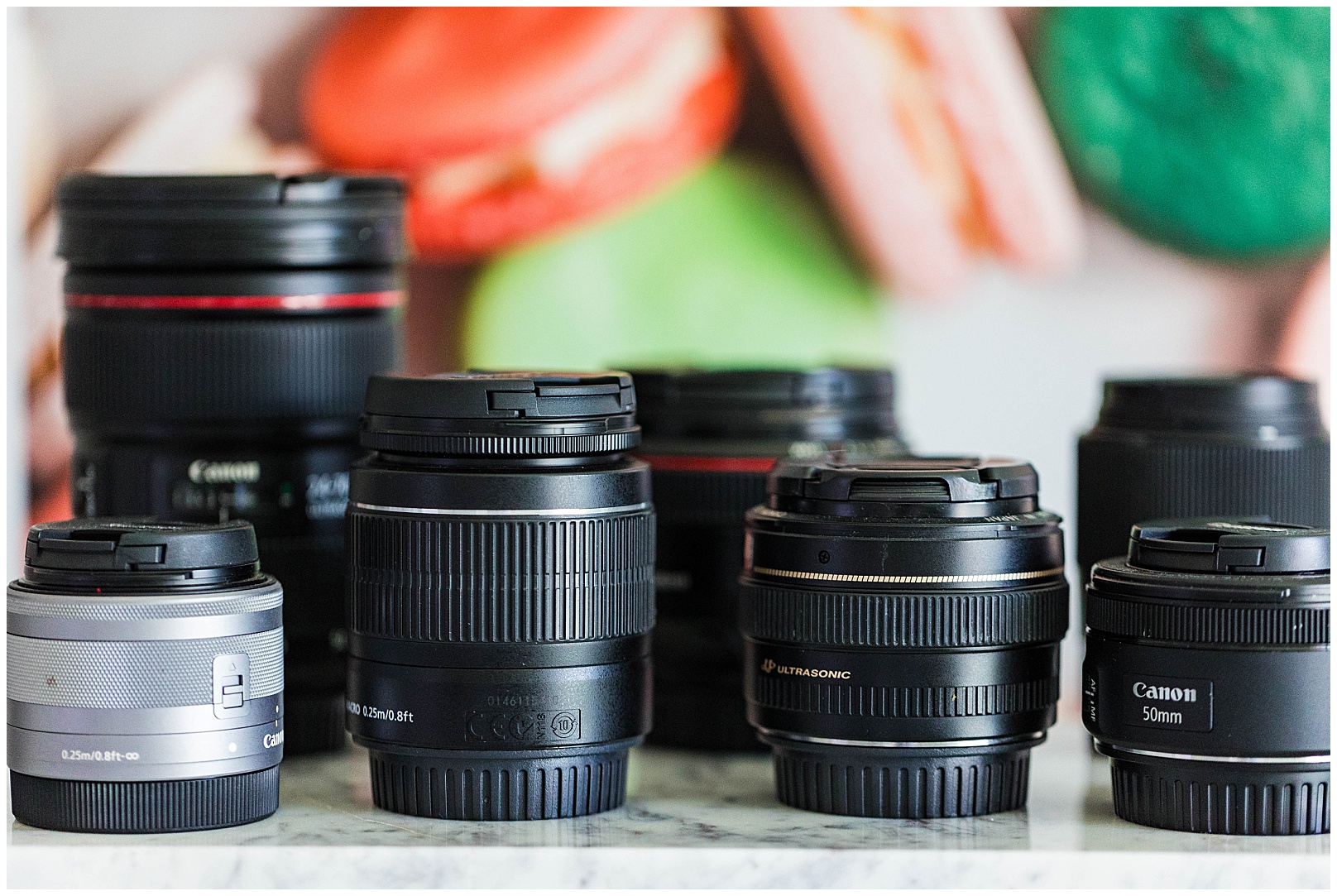
Aug 29, 2023
What Are the Best Camera Lenses for Food Photography?
Quick disclosure: This page contains affiliate links which means we may receive a commission when you use our link.
What Are the Best Camera Lenses for Food Photography?
What makes a great camera? We dove deep into this in a recent blog, “What Kind of Camera Do I Need for Food Photography?” But what if you have decided to take your photography to the next level, and now you’re looking into the best camera lenses for food photography? Don’t worry. We can help you there, too.
While having a camera with a great sensor and high megapixels can help you craft incredible images, having a great camera lens is equally as important. So, let’s take a look at the importance of camera lenses, how they work, and what lenses you should consider for your own food photography.
What is a Camera Lens?
A camera cannot capture an image without a lens. A lens focuses light to create an image. Without a lens, every image would be bright white because all your camera could see is light.
Camera lenses can be interchangeable or built into the camera’s construction. It all depends on what you need or want for your photos. What makes a modern camera lens is the ability to set the angles of incidence and refraction to create the focus of an image—basically, the portion of the image that’s sharp instead of blurry.
How Does a Camera Lens Work?
Now that you know the basic overview of a camera lens, how does it work? You need to understand a few key characteristics before we can recommend gear: focal length, aperture, and focal distance. Only once you understand these elements can you decide on the best camera lenses for food photography.
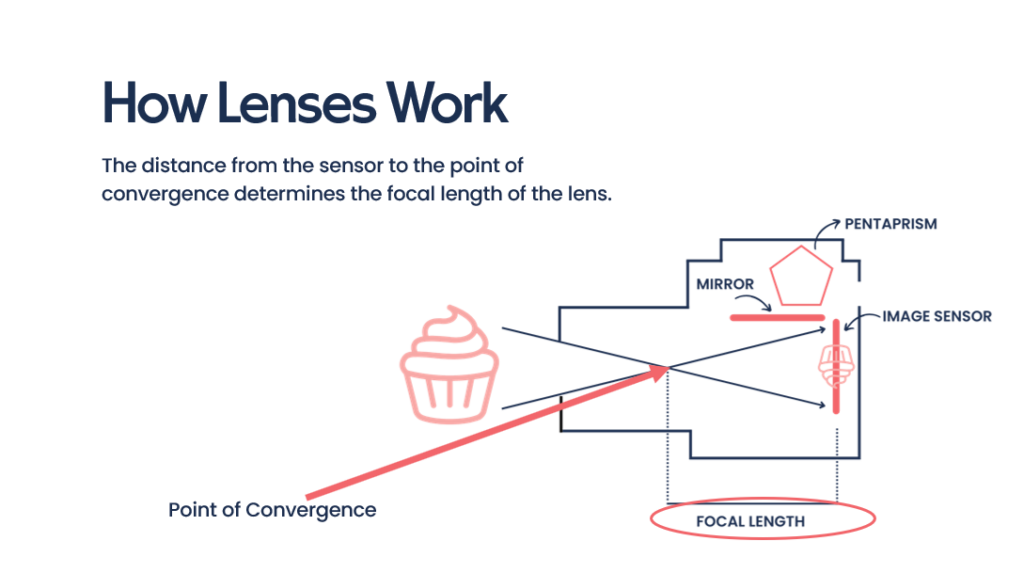
So, let’s get into it.
Focal Length
Focal length refers to the distance between the sensor and the point of convergence within the lens. It is measured in millimeters, and in the simplest terms possible, focal length refers to how much of a scene you are able to capture.
The smaller the focal length, the wider the field of view, and the smaller objects appear. These are called wide-angle lenses and allow you to capture large scenes all at once. On the other hand, telephoto lenses have a longer focal length, and a more narrow field of view, so images appear larger. These lenses compress scenes to bring the focus closer than it actually is.
Here’s an example with cupcakes taken at 24mm (smaller focal length) and 70mm (larger focal length). Do you see the difference? Both were taken at the same distance, just with different focal length lenses.

Now, before we can move on, we need to discuss focal length on crop sensor vs full-frame cameras. It makes a difference.
A 50mm focal length on a crop sensor camera gives the appearance of a more narrow field of view, and as such, creates the illusion that you are closer to the subject than you are. Basically, a 50mm lens on a crop sensor camera is the equivalent of an 80mm lens on a full frame—something to keep in mind.

Aperture
Aperture refers to the opening of the lens and is measured in f/stops. The wider the opening, the more light that can enter the lens. This means that you’ll be able to capture more detail and produce higher-quality images. When looking at lenses, the aperture number (f/stop) references the absolute maximum width the lens is able to open. The lower the number, the greater the width.

So, what does this look like in action? Let’s take Canon as an example. There are three different 50mm lenses that Canon produces: 1.8, 1.4, and 1.2. Each of these lenses comes in at a very different price point because of the aperture. That’s because the wider the maximum aperture (1.2) the higher the quality of the lens.
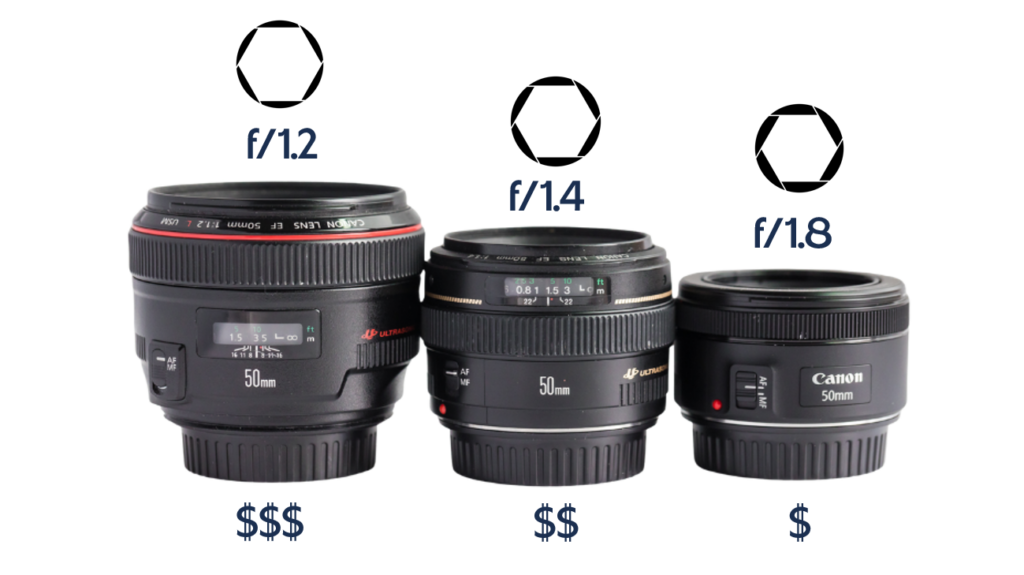
Aperture plays a significant role in food photography. Not only does it allow more light into your lens, which means you can take higher quality photos even in low light conditions, but the aperture also determines how much of an image you have in focus. Basically, if you want to take a photo with a crisp subject and a nicely blurred background, you need a higher aperture.
Focal Distance
The last characteristic that you need to understand before purchasing the best camera lenses for food photography is focal distance. Every lens has a minimum focal distance, which indicates how far away or close to a subject you need to be to focus. The focal distance is measured by your camera’s sensor.
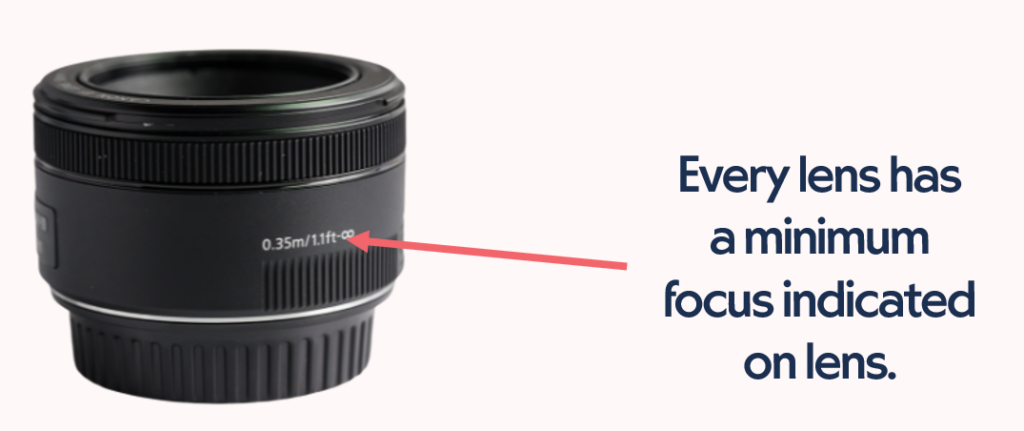
If ever you can’t get your image to focus, you might be too close for the focal distance of your lens, and it’s time to take a step back.
3 Categories of Camera Lenses for Food Photography
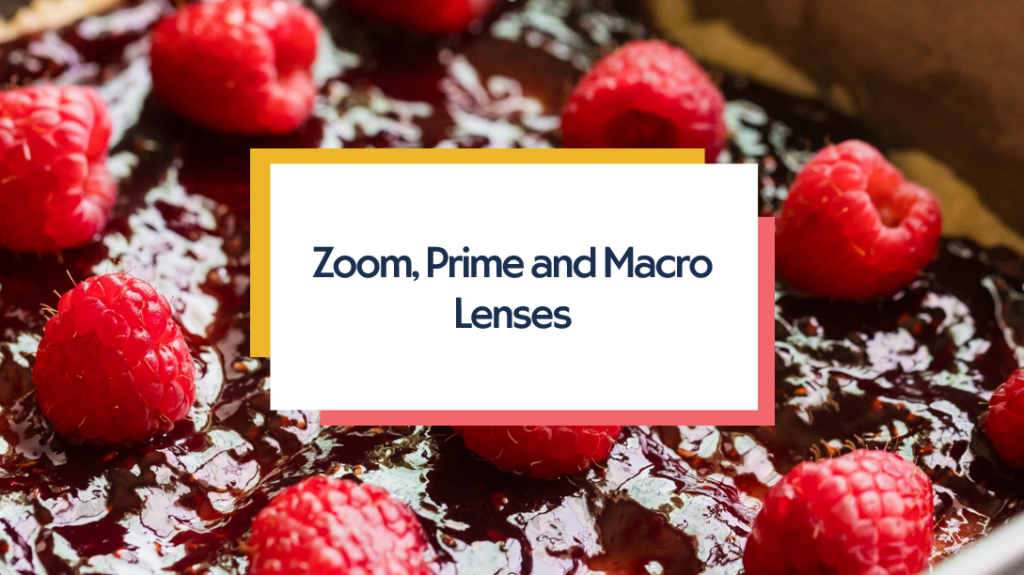
Now that you understand how camera lenses work and the three most important characteristics to consider, let’s get into the type of lenses you can buy. There are three main categories of lenses for food photography: zoom, prime, and macro. Let’s dive in.
Zoom Lenses
Zoom lenses allow you to take pictures at different focal lengths. You can zoom in and out to change your field of view to be wider or narrower, depending on your needs. In more technical terms, this type of lens works by moving the point of convergence closer or further from the sensor.
The benefit of a zoom lens is the ability to zoom in on your subject and get up closer without changing your lens. On the flip side, zoom lenses tend not to take as crisp and clear pictures as prime lenses because they have a few more moving parts.
Another thing to consider before purchasing a zoom lens is whether it uses a variable or fixed aperture.
- The Canon 18-55 3.5-5.6 kit lenses use variable aperture, which means the maximum aperture changes when you zoom in, and there isn’t anything you can do to stop it from changing. This means that you will have to manually adjust other settings during a session to keep your exposure the same.
- A 24-70 zoom lens, on the other hand, has a fixed aperture, which means that no matter the zoom, the maximum aperture doesn’t change.
Prime Lenses
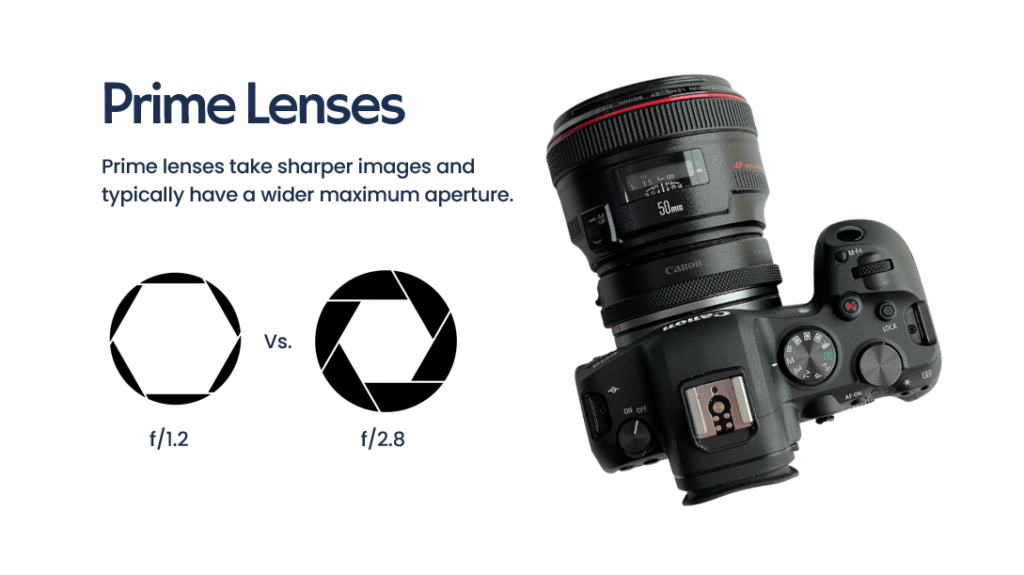
Prime lenses typically offer wider maximum apertures (reaching all the way to f/1.2) and, as such, take sharper images. These are fixed focal length lenses that are often smaller, more lightweight, and more portable than zoom lenses. And because prime lenses only have to cover one field of view, they have fewer moving parts, are simpler to use, and harder to break.
Macro Lenses
Finally there are macro lenses. Macro lenses have a shooter minimum focus distance requirement, which makes them a great choice for capturing details. Macro lenses are often used in engagement ring, snowflake, and close-up animal photography. They are also incredibly popular in food photography.
In fact, the 100mm macro lens is a favorite among food photographers because you can really get close to the food.
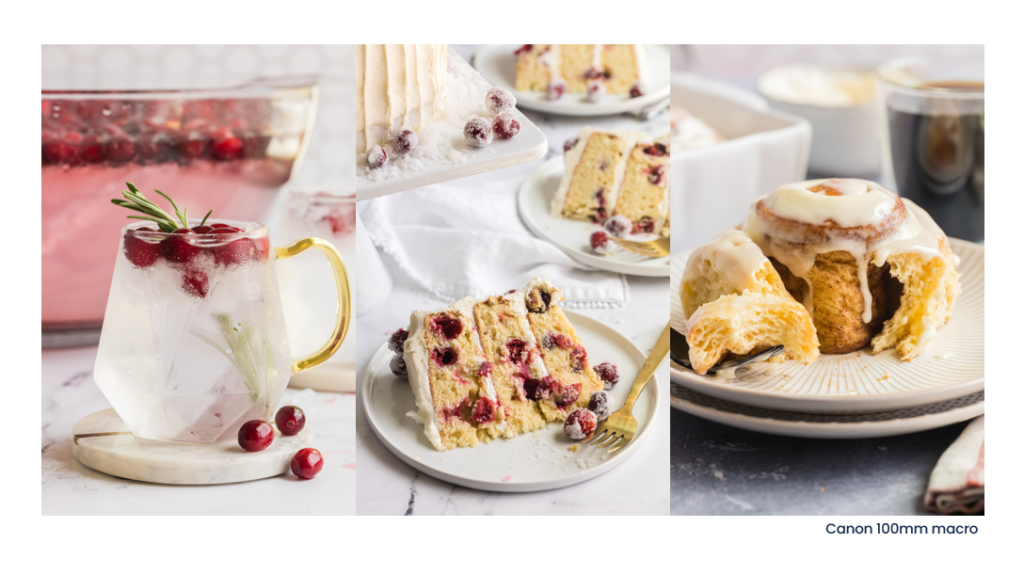
It is important to note that macro lenses can get quite expensive. So, if you are starting out, buying a macro lens might be out of your reach. The good news is that macro filters are an inexpensive solution to get you started.
There are different macro filters to fit a variety of different-sized lenses, and each will allow you to practice and build your portfolio with macro photos without the huge price tag. Just understand that this is only a temporary solution that you will outgrow quickly.
Buying the Best Camera Lenses for Food Photography
Let’s end this blog by breaking down the best camera lenses for food photography and outlining exactly what we recommend. After all, that’s why you’re here.
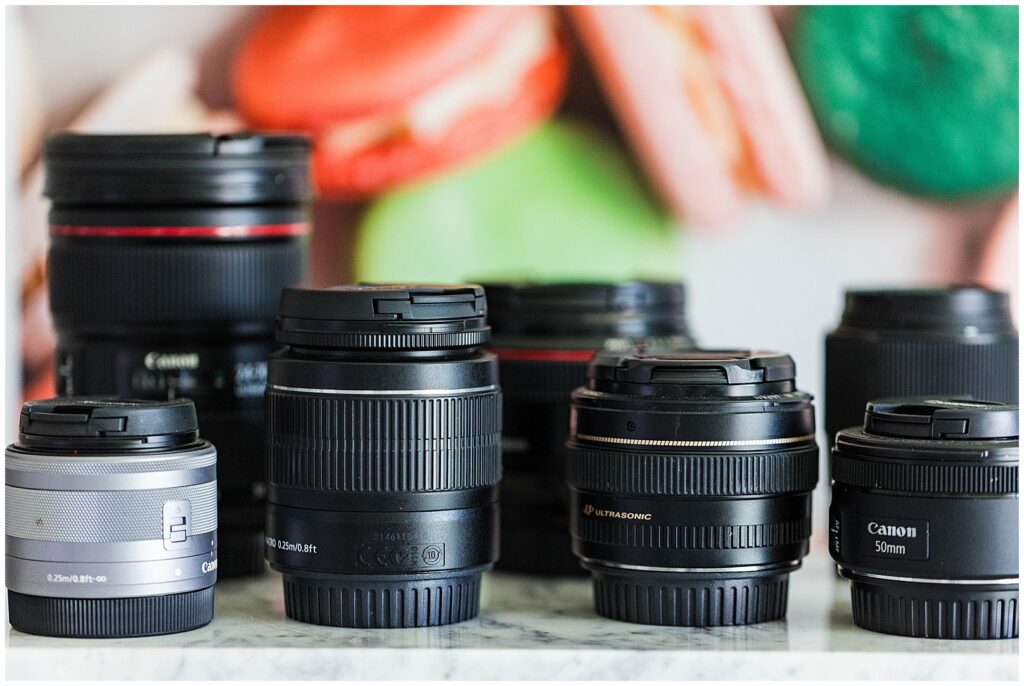
Best Camera Lenses for Beginners
The 18-55mm lens is highly underrated. You can get closer than you would with a 50mm prime, and while this kit lens is made of slightly lower-quality materials, it gets the job done.
For a non-zoom lens, the 50 1.8 is another option that is great for beginners. And adding a macro filter to this lens offers a simple upgrade to mimic a 100mm lens.
If you're a Nikon mirrorless shooter, you'll love Nikon's 50mm macro. It's a great all purpose lens.
Best Camera Lens Upgrade for Food Photography
The 100mm macro lens (Canon 100mm or Nikon 105mm) is definitely one of the first upgrades you should make. Coupled with its long focal length, you can get as close to the food as you want and make it look larger than life.
Best High-Quality Camera Lens for Food Photography
Long term, your goal should be to upgrade your camera gear so you can take the highest quality images possible. In this case, we have a few recommendations:
- 50mm 1.2 — which is great for process photos
- 100mm 2.8 — great lens for close-up heroes
- 50mm macro 2.8 — great lens for close-up heroes (Nikon mirrorless only)
- 24-70mm 2.8 — which allows you to get a slightly wider angle and works well when your camera is mounted overhead.
We hope this guide to camera lenses for food photography has been helpful. You can find all of our camera gear recommendations as well as recommendations for accessories and MORE in our Amazon Storefront.

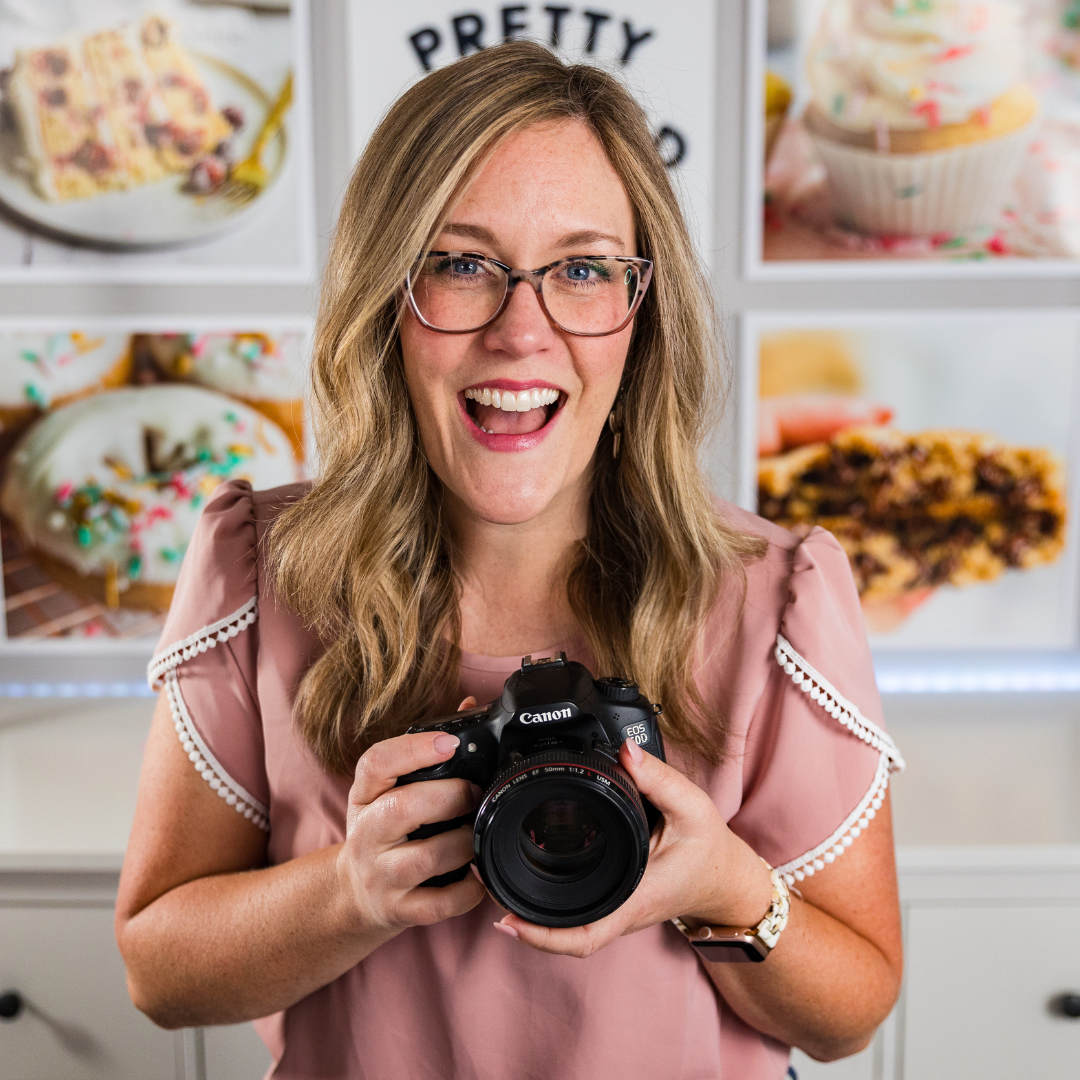
Pretty Focused Founder | I’m a wife, educator, photographer and homeschool mom. I created my own dream job working from home and now teach others how to turn their passions into creative businesses.
PRIVACY / disclaimer / accessibility / Code of conduct / Earnings Disclaimer / Be an Affiliate
melodee lynn photography llc - Copyright 2023
www. PRETTYFOCUSED.COM / PSALM 90:17
melodee lynn photography llc
Copyright 2023
PRETTYFOCUSED.COM
PRIVACY / disclaimer / accessibility Code of conduct / Earnings Disclaimer
Be an Affiliate / PSALM 90:17